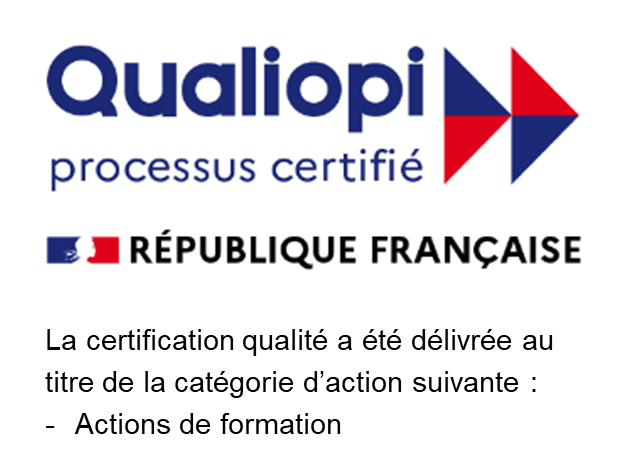Intercultural Training's Importance in a Virtual Work World

Has the need for intercultural training become obsolete? While many business stakeholders assume that intercultural agility is less important for global teams that interact virtually, the reality is quite the opposite: Intercultural misunderstandings can happen under the best of circumstances, but their likelihood is greatly increased in remote work and virtual settings – and it costs organizations dearly, resulting in team friction and discord, lost time and productivity, missed goals and deadlines, risks to the company’s market reputation, talent disengagement or attrition when employees feel disenfranchised, and negative impacts to their bottom line.
For organizations to be successful, decision-makers need to give their employees every chance to collaborate effectively. In this blog post, we'll explore why intercultural training should always be a consideration in remote work environments, some common challenges that can occur when global teams collaborate via their computer screens, and how intercultural training can benefit businesses by bridging cultural gaps in our increasingly digital workplaces.
Why does intercultural training matter in remote and hybrid workforce scenarios?
There are many reasons global teams need intercultural training to be successful in remote interactions. Below, we share just a few:
Limited Visual Clues

While in-office work scenarios allow for increased exposure to each other, remote work limits interactions between employees, which means there’s less time for them to notice and understand the varying communication styles and patterns of their colleagues. What’s more, in every culture people say a great deal without speaking at all: Body language communicates volumes about whether a colleague or direct report fully understands information being shared, agrees with plans being made, or is confused by statements made by teammates. Additionally, the meaning of body language differs from culture to culture. For instance, if someone crosses their arms in one country, they may be perceived as being assertive; in another country, that same action could cause the individual to be perceived as ‘closed off’ or unwilling to compromise. When video cameras are turned on, body language from the chest up can be magnified, while anything below can be missed entirely. When cameras are off, facial expressions are also important visual clues that are missed.
Differing Communication Styles

When teams are diverse, their communication styles are equally diverse, so it stands to reason that collaboration will be negatively impacted if teammates don't understand each other's varying perspectives, ways of working, value systems, and approaches to problem solving. Some cultures prioritize direct communication, while others may use more nuanced or indirect approaches. For example, Japanese nationals tend to be more indirect in their communication style, emphasizing harmony and subtlety. But Americans tend to value directness and clarity. Without understanding these differences, an American team member might misinterpret a Japanese colleague's indirect feedback as indecision, leading to frustration and miscommunication. When teams don’t understand the motivation or reasoning behind their teammates’ actions and communications, messages can be misinterpreted, leading to frustration, a lack of cohesion, and decreased productivity. Intercultural training helps bridge these gaps, ensuring that all team members can communicate effectively and collaborate smoothly.
Gestures Differ from Culture to Culture

A gesture that’s common in one culture might be offensive in another, and the lack of face-to-face time makes it harder to clarify and resolve these miscommunications quickly. For example, the ‘OK’ sign with your fingers (making a circle with the tips of your thumb and forefinger) would symbolize ‘money’ in Japan and Mexico, ‘agreement’ in the United States, and the letter ‘F’ in sign language. But in France, you may actually offend someone, as the ‘OK’ hand gesture is considered an insult, meaning the person it’s directed to is a ‘zero,’ or worthless. In Brazil, it can be interpreted as a vulgar expression, synonymous with giving someone the middle finger in other parts of the world. Even a simple nod can mean "yes" in some countries, but “no” in others, like Greece or Bulgaria. Without understanding these differences, virtual teams risk frequent misinterpretations that are costly to businesses, making intercultural training truly essential.
Time Zone Sensitivity

Global teams span multiple time zones, requiring sensitivity to local hours and cultural holidays. For instance, awareness of Ramadan fasting and its impact on working hours and energy levels can foster respect and cooperation, while a lack of awareness could cause Middle Eastern colleagues to feel unseen — and non-Middle Eastern teammates to be confused and frustrated by any changes in availability or behavior. Scheduling meetings with cultural context in mind not only helps accommodate diverse needs, it also promotes inclusivity, which is key in business DEI initiatives, too.
Diverse Meeting Etiquette

Cultural differences in meeting etiquette can also be magnified in virtual settings. For example, while some cultures value small talk to build rapport before starting a meeting or project, others prefer diving straight into business. Punctuality varies too: Arriving five minutes late might be acceptable in one culture but disrespectful in another. For example, German business meetings typically start promptly and focus strictly on the agenda, with minimal small talk. This contrasts with Mexican business culture, where casual conversations build relationships and establish trust before discussing business. In virtual settings, these differences become more pronounced; a German participant might view a casual start as inefficient, while a Mexican colleague could see diving straight into business as impersonal or rushed. Virtual platforms highlight these differences, making intercultural training vital to building understanding, respect, and trust.
Employee Engagement

When employees are misunderstood for cultural reasons, they’re likely to feel disrespected or disregarded, which can lead to disengagement, lower job satisfaction and higher attrition rates. And for all the reasons mentioned above, team leaders and supervisors may not even know it’s happening. Disengaged employees are less likely to contribute to conversations and brainstorming sessions. They’re more likely to turn their cameras off if it’s an option, too. All of this can even lead to cultural “quiet quitting,” a phenomenon in which employees gradually disengage from their jobs before eventually quitting the organization, altogether. When employees feel connected and valued, they’re more likely to participate openly and actively, bringing their best selves to work and benefiting the organization through their ideas and engagement. Intercultural training helps create an inclusive environment where these outcomes are more likely.
Varying Comfort Levels with Technology

Employees from any culture will have varied comfort levels when it comes to using technology platforms — but cultural communication styles and business hierarchies strongly impact how direct an employee will be when they need help using them. This is crucial when it comes to remote work collaboration. For example, if an employee comes from a culture where indirect communication is the norm, or it would be considered embarrassing to admit a lack of skill (for example, how to change a Zoom background or share a screen in Teams), they’ll likely avoid asking for help and could fall behind and fail to participate in team discussions, hindering teamwork and progress. Understanding how intercultural communication differences can impact mastery – and troubleshooting before miscommunications occur – is crucial to ensuring that all global team members can participate in virtual calls and projects, both freely and efficiently.
Business Hierarchies

Differing cultural norms and business hierarchies can also negatively impact virtual meetings. This can include everything from who leads a meeting or should speak first to who sits at the head of a conference table or the farthest away from the door. To colleagues from cultures where relationship-building is key, starting a virtual meeting with a quick greeting and jumping straight into the agenda might be offensive. In other countries, speaking before the senior employee in the room can be seen as disrespectful. Understanding cultural differences, communication nuances, and differences in business hierarchies is vital for maintaining harmony and respect in virtual interactions.
Intercultural training maximizes employee engagement & business success
For businesses to be successful in today's remote and digital world market, they simply must make intercultural training a priority: When organizations ensure that their diverse employee populations understand each other’s differences and value each other as individuals, they not only foster smoother communication, they also encourage the kind of inclusive and engaged work environment that companies depend on to maximize collaboration, innovation, and productivity. By investing in intercultural training, businesses can maximize effective communication and create an open environment for conflict resolution when miscommunications occur. By creating a more connected and productive workforce, both employees and businesses thrive.
To learn more about how NetExpat can help your organization foster stronger collaboration in your diverse remote workforce, contact us at
info@netexpat.com. Thanks to technology and a wealth of experience, we’re able to provide this training easily, on a variety of platforms, with as little commitment as half a day for expats and an hour for global business travelers/employees who interface with individuals from cultures other than their own. For more information on intercultural issues and statistics, see our latest “Intercultural Landscape Survey Report.”
Share this post














